Ask a question from expert
Assessment of URS Hardware Requirements Part B: Marking and Assessment
44 Pages8698 Words191 Views
Added on 2020-05-28
About This Document
This report is based on "formal models for embedded system design". Here we will discuss analyze typical embedded system applications and select the appropriate solution grading criteria in need of restructuring. Search & design methodology to develop a detailed analysis of URS, hardware, and software requirements with microcontroller configuration and programming. Also, we will discuss on implementation of the components to create a prototype, write the code, which is a direct translation of the algorithm, and test the prototype.
Assessment of URS Hardware Requirements Part B: Marking and Assessment
Added on 2020-05-28
BookmarkShareRelated Documents
Part B: Marking and Assessment(to be completed by Module Lecturer)This assignment will be marked out of 100%This assignment contributes to 20% of the total module marks.This assignment is bonded / non- bonded. Details :Assessment Task: MarksAwardedMarksAvailableTask-1-Background search & Design Methodology to develop detailed:(a)Analysis of URS(b)Hardware requirements(c) Software Requirements Model .. Block diagram104½2½2½1205555Task-2- Design(a) Layout diagram/PCB(b) SAV Body + BOM(c) Write the Algorithm1774½630101010Task-3- Implementation(a)Assemble (Build) the SAV components (b)Write the code(c) Test214½14340102010Task-4. Full Report & Final presentation6½10Total56100Learning Outcomes to be assessed (as specified in the validated module descriptor https://icis.southwales.ac.uk/ ):LO1. Apply formal design methodologies to implement an embedded system LO2: Analyse typical embedded system applications and select the appropriate solutionGrading Criteria: : In need of restructuring!Feedback/feed-forward (linked to assessment criteria):Areas where you have done well:AnalysisFeedback from this assessment to help you to improve future assessments:Misunderstanding or narrow interpretation of the questions.Other commentsThe university requires students to include the assessment cover sheets duly filled as part of the formal assessment. Students are advised to adhere to the format of the marking scheme as laid out.All assessments are moderated as such, so implementation should follow closely the instructions & requirements specified by the format. Date: 19/12/2017 Work on this module has been marked, double marked/moderated in line with USW procedures.

Provisional mark only: subject to change and / or confirmation bythe Assessment BoardPart C: Reflections on Assessment(to be completed by student – optional)Use of previous feedback:In this assessment, I have taken/took note of the following points in feedback on previous work:Please indicate which of the following you feel/felt applies/applied to your submitted workA reasonable attempt. I could have developed some of thesections further. A good attempt, displaying my understanding and learning, with analysis in some parts.A very good attempt. The work demonstrates my clear understanding of the learning supported by relevant literature and scholarly work with good analysis and evaluation.An excellent attempt, with clear application of literature andscholarly work, demonstrating significant analysis and evaluation. What I found most difficult about this assessmentThe areas where I would value/would have valued feedback:
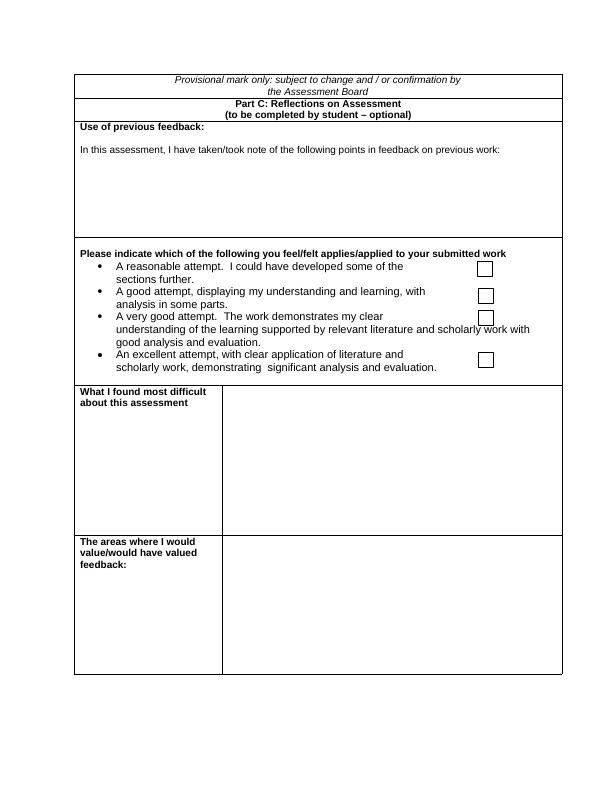
Development of a SAV(SmartAutonomousVehicle)YamamaAbdulrazaq170940701
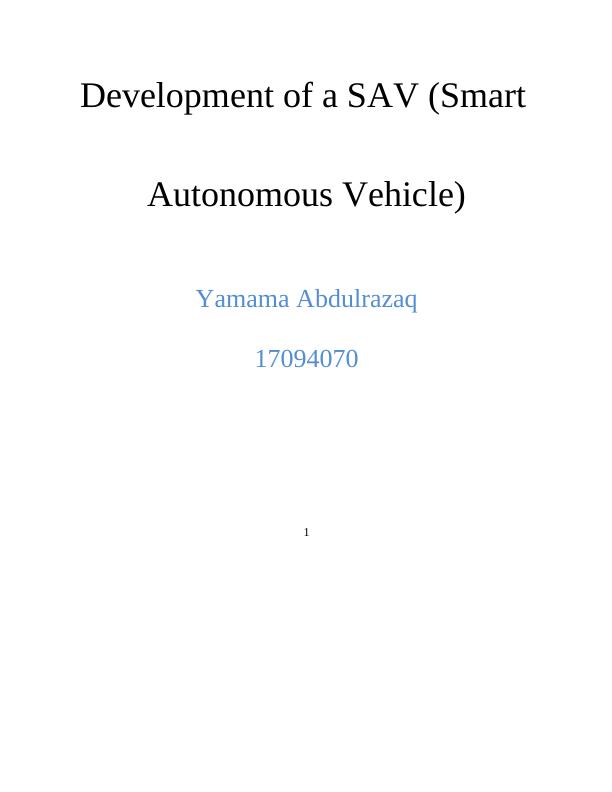
TableofContentsIntroduction.........................................................................................................................4Aims and objectives........................................................................................................5Tools &Techniques........................................................................................................5Part B: MarkingandAssessment........................................................................................6Task-1-Background search &Design Methodologyto develop detailed...........................6 (a) AnalysisofURS........................................................................................................6 (b)Hardwarerequirements...........................................................................................12 (c) SoftwareRequirements...........................................................................................12 (d)Model of thesystem................................................................................................13Task-2-Design..................................................................................................................13(a)Layout diagram/PCB...............................................................................................13(b)SAVBody+BOM..................................................................................................13(c) Writethe Algorithm................................................................................................14Task-3-Implementation....................................................................................................19 (a) Assemble(Build) the SAV components..................................................................20 (b)Writethe code.........................................................................................................20 (c) Test..........................................................................................................................30Figure1. Codecompilerand tester screen........................................................31Figure2. Test results.........................................................................................31Part C:Reflections on Assessment...................................................................................32References.........................................................................................................................33Appendix...........................................................................................................................35
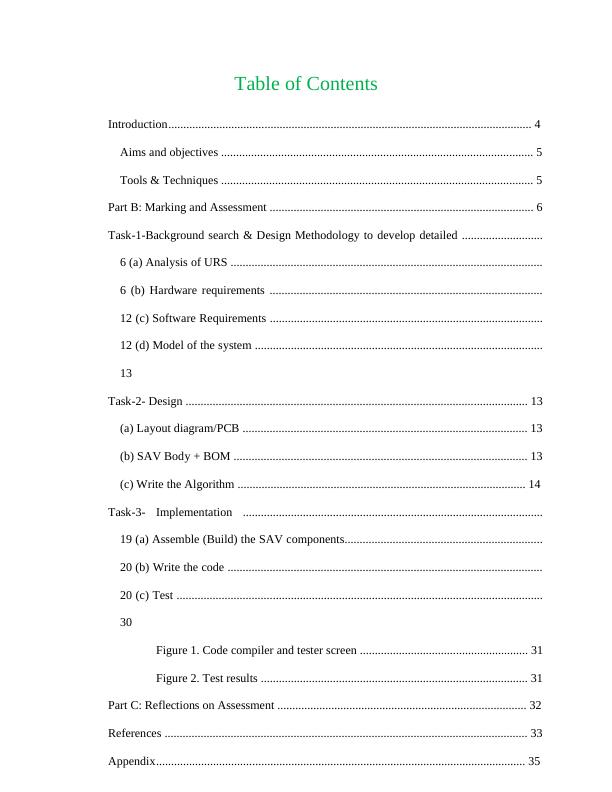
2

A1. ModelLayout.........................................................................................................35A2.Layout of thePCB..................................................................................................37A3. Chassis of the SAV................................................................................................39A4. H-BridgeController...............................................................................................39A5. APDS-9930 DigitalAmbientLight and ProximityController..............................403
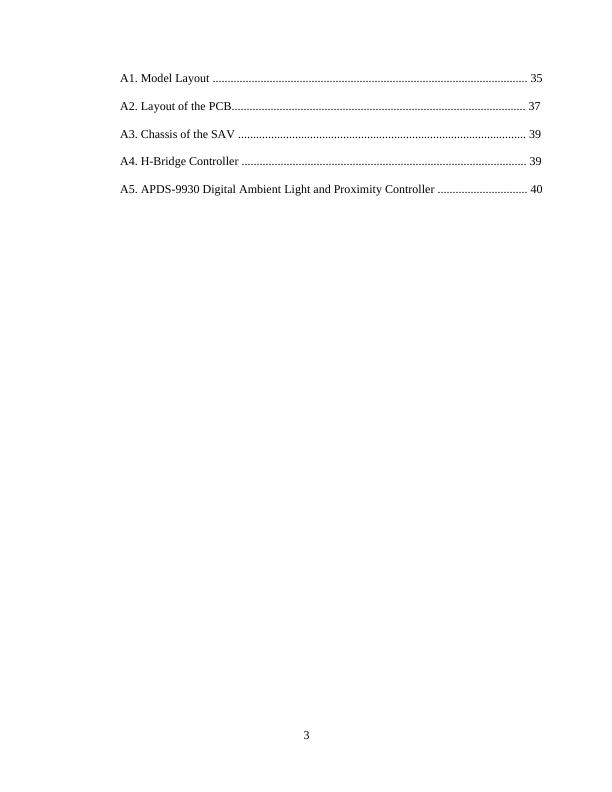
7INTRODUCTIONSmartAutonomousVehicles(SAVs)are driverlesstransportationunits thatcantravelonapre-programmed path, as per the defined parameters such as halting, duration of halt, avoidobstacles,andreturntothepointoforigin(Almagambetovetal.2015). There isanexpectation thatthefuturewillseemoreofsuchvehiclessincetheyaresafe,they travelatadefinedspeed, identifyhazardsandtakeevasiveactions,andremovethehumanelementfromthedriving experience(Chenetal.2012).Anotheradvantageisthatsuchvehiclesareusefulfortasksthat canbeautomatedsuchaspicking anddropping parcelsatdesignatedspots,travelling hazardous areasfiledwithtoxic chemicals,fire,oroverdifficultterrain,thathasahighriskofaccidents (Gerlaetal.2014).Consequently,these unitscanbe usedtodeliver packagesfor regularcourier serviceortodeliverreliefmaterialtoareasstruckby naturalcalamities.Severalfirmssuchas Tesla,Google,BMW,andAudihaveintroducedconceptcars,andtheserepresentthefuture modeof travel(Kalraand Paddock,2016). While these automobilesareexpensive,thedocument presentsthedesignforasmallSAV,poweredbyabattery,andwhichcanbeusedbyUSWat theTrefforestcampustodeliversmallpackagesalongapre-determinedpathwithultrasonic sensors. Cost ofthe devices willbewithin 20,000 GBP.

8Aims andobjectivesAimoftheprojectis todesigna SAVusing embeddedelectronicsystemsthatwill guideandpowerthevehicle.The designincorporatesseveraltechnologiessuchaselectronicsandmicroprocessors,computerprogramming modules,ultrasonictechnology,andmechanical systemsfortransportingandchassisdesign.Twomainpartsoftheprojectarethedesignandimplementationandeachpartisdividedintophases.The UserRequirementSpecification(URS)document,presentsthetop-leveldesign(Kimetal.2012).Objectives oftheresearcharetocomplete threetasks, brieflydescribedas follows.Task1,Backgroundsearch&DesignMethodology todevelopdetailedanalysisofURS,hardwareand softwarerequirements with microcontroller configuration and programmingTask2,Designthesystemwithlayoutdiagramandthe PCB board.Commissionthe chassisand derivethe Bill of Material (BOM),write the algorithm forthe SAVfunction.Task3,Implementationofthecomponentstocreateaprototype,writethecode,whichis adirect translationof thealgorithm, and test theprototype.Tools & TechniquesThefollowingtools and techniques will beused: IDE (e2 studio)YRDK63N developmentboard or alikePCTool boxwithinstruments such as pliers, solderingkit, mountingscrews, etc. Manuals (H/W&S/W)PART B: MARKING ANDASSESSMENTThissectionpresentsthethreetasksandtheirsubtasks.Importantaspectsoftheprojectaredetailed.
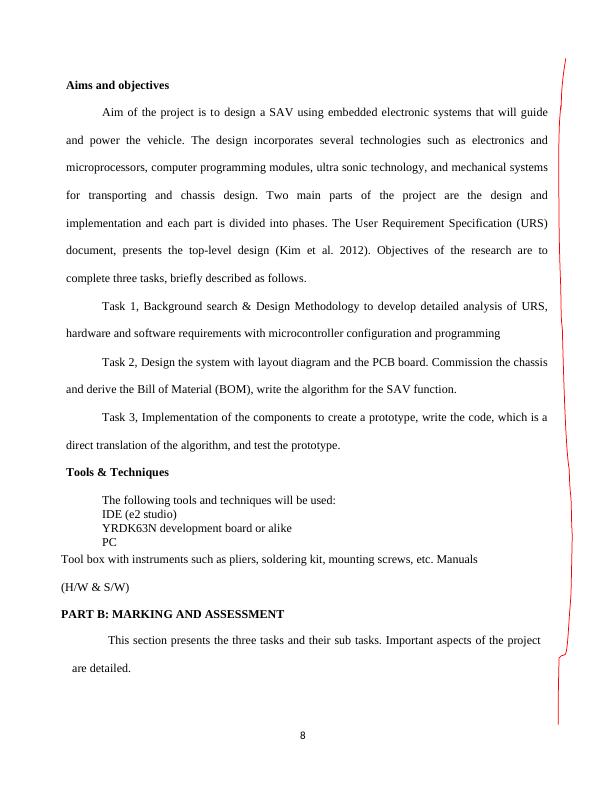
End of preview
Want to access all the pages? Upload your documents or become a member.
Related Documents
Techniques in Natural Language Processinglg...
|15
|3692
|436
Faculty of Engineering & Technology.lg...
|6
|1286
|200
Faculty of Engineering & Technology.lg...
|6
|1286
|75
Desklib - Online Library for Study Material with Solved Assignments, Essays, Dissertationlg...
|15
|1782
|74
Business Modelling and Simulation Assignment Task 1lg...
|7
|3656
|480
ACC00130 – Auditing: Assessment Task in lieu of scheduled invigilated SE 2022lg...
|18
|3706
|26